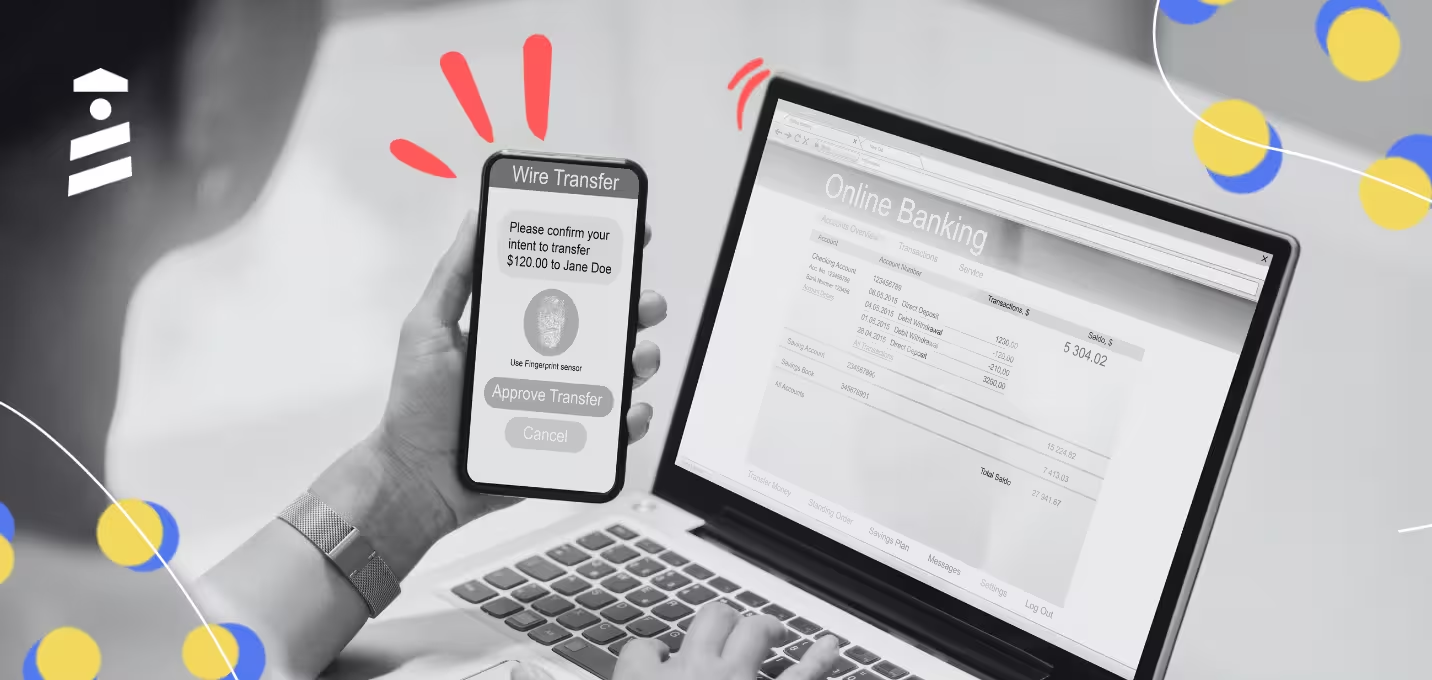

Your SaaS website is one of the first communication channels where you meet your potential and current clients. This is where you reveal your value proposition - maybe for the first time.
A website has a purpose. It communicates our value proposition, and this value proposition changes over time.
The things we do and the value we promise to people change over time. That's when we should decide to redesign the website.
Says the Head of Product, Alican, from UserGuiding.
He will be giving lots of recommendations along the way, so make sure you stick around.
Wishing you had the time? Here is the TL;DR:
TL;DR
- Redesign your SaaS website if
- it's outdated,
- your value proposition has changed,
- visitors aren't converting,
- your branding has changed,
- you're adding new offerings, or
- mobile users have issues.
- SaaS websites must attract, engage, and convert users, focusing on customer success and long-term relationships.
- Designing from scratch builds a new site; redesigning improves an existing one to better serve business goals and user needs.
- Successful redesigns enhance user experience, modernize aesthetics, clarify messaging, ensure mobile responsiveness, and boost conversion rates.
- Redesigning steps: Define goals, analyze current site, research, plan, create wireframes and prototypes, design and develop, test and optimize, launch and monitor.
- Examples of successful redesigns include
- Slack adding vibrant colors and intuitive navigation,
- Dropbox modernizing with a clean layout and powerful messaging,
- Asana using high-quality imagery and interactive features, and
- Mailchimp organizing its layout with bold visuals and clear navigation.
When to Redesign Your SaaS Website
1- When Your Value Proposition Has Changed
A website's primary purpose is to communicate your value proposition to potential customers.
Over time, the value you offer and the promises you make to your audience evolve.
If this transformation isn't reflected accurately on your website, it can lead to misunderstandings and missed opportunities.
It's essential to start by clearly defining the message you want to convey.
Prioritize communication design first.
This involves deciding on the core messages and meaningful statements that reflect your updated value proposition.
Only then should you move on to the visual design aspects, such as whether to use images or videos on the homepage, and what components to include.
Says our Head of Product, Alican.
He adds:
A common mistake is redesigning the website's visuals first and then trying to fit meaningful content into it.
This approach can result in a disconnect between what you want to communicate and how it is presented.
Instead, establish your value proposition and messages upfront.
Then, design all the components, content, media, and visuals to align with these messages.
2- When Your Website is Outdated
The digital world evolves at lightning speed. Design trends and user expectations shift constantly.
If your website looks like it belongs in a time capsule from the early 2000s, it's time for a facelift.
Modernizing your design not only improves aesthetics but also enhances user experience, keeping visitors engaged and coming back for more.
3- If Visitors are Not Taking the Desired Action
Your website should be a well-oiled conversion machine.
If visitors are landing on your site but not signing up, purchasing, or engaging in the ways you want, it’s a clear signal that something needs to change.
A redesign focused on optimizing conversion paths and simplifying user journeys can turn hesitant visitors into enthusiastic customers.
4- When Your Branding Has Evolved
As your SaaS company grows, your branding will likely evolve.
New logos, color schemes, and messaging require a website that reflects these changes.
A consistent online presence with your brand identity helps build trust and recognition among your audience.
5- If You’re Expanding Your Offerings
Introducing new features, products, or services?
Your website should showcase these additions seamlessly.
A redesign can help you integrate new offerings into your existing site structure, making it easy for visitors to discover and engage with everything you have to offer.
6- When Mobile Users are Struggling
With more people accessing websites from their mobile devices than ever before, having a mobile-friendly site is non-negotiable.
If your current design offers a poor mobile experience, it’s time to redesign with a mobile-first approach to ensure all users have a smooth and enjoyable visit.
What Makes SaaS Websites Different from Other Websites
SaaS websites are not just digital brochures; they are dynamic platforms designed to attract, engage, and convert users into loyal customers.
Unlike traditional websites, which might focus on delivering static information or promoting physical products, SaaS websites have unique demands.
They need to
- communicate complex value propositions,
- showcase product capabilities, and
- support a seamless user experience from the first visit to ongoing use.
One emerging concept in the SaaS world is B4B or Business-for-Business.
Unlike B2B, which implies a transaction between two businesses, B4B emphasizes creating value for the client's business as a partner rather than just a vendor.
This approach influences SaaS website design by focusing on customer success and long-term relationships.
A B4B-inspired design prioritizes
- clear communication of benefits,
- intuitive navigation, and
- resources that empower users to maximize their use of the software.
This is what the product-led approach also recommends. A product-led approach, being a big catalyst in the SaaS world, definitely advises a SaaS website to
- demonstrate the value proposition clearly and
- guide visitors for conversion even without human interaction.
So, when redesigning a SaaS website, you'll need to consider all these growing trends in the field.
Design or Redesign: What's the difference?
Designing a website from scratch involves creating a new digital presence tailored to your brand and objectives.
It’s about building a foundation that can grow and evolve with your business.
Redesigning, on the other hand, means taking an existing site and improving it.
This could involve updating the look and feel, enhancing functionality, or realigning the site with new business goals.
Whether you're designing or redesigning, the goal is to create a site that effectively serves your audience and drives your business forward.
What Does A Successful Redesign Look Like?
1- It enhances user experience
A successful redesign prioritizes user experience (UX) above all else, especially now when we talk about B4B and PLG (Product-Led Growth) for sustainable success.
So, you need to ensure intuitive navigation, faster load times, and a seamless journey from landing page to conversion. Visitors should find what they need quickly and easily.
2- It follows consistent aesthetics
Consistency in colors, fonts, and imagery helps reinforce your brand identity.
A sleek, professional look that aligns with current design trends not only attracts visitors but also instills confidence and trust in your product.
3- Its message is clear and compelling
This means concise, impactful copy that resonates with your target audience.
Successful redesigns often include updated messaging that speaks directly to user pain points and highlights the benefits of your SaaS product compellingly.
4- It's natively mobile-friendly
A successful redesign ensures a responsive design that works flawlessly across all screen sizes.
This adaptability enhances the user experience for mobile visitors, making it easier for them to engage with your content and take action.
5- It pays back with improved conversion rates
Ultimately, the success of a redesign is measured by improved conversion rates.
This can be achieved through strategic placement of calls-to-action (CTAs), optimized landing pages, and streamlined checkout or signup processes.
By removing friction points and making it easy for visitors to convert, a redesign can lead to increased sign-ups, purchases, and overall user engagement.
How to Redesign a SaaS Website in 8 Steps

Step 1: Define Your Goals
So, why do you need to redesign your SaaS website?
Do you really need to do that?
Here are some common goals - they are usually the outcome of the pain points in your current website:
- increasing sign-ups,
- improving user engagement, or
- modernizing your brand image.
Having specific goals will guide the entire process and ensure you stay focused on what matters most.
Step 2: Analyze Your Current Website
So, what do your goals tell you about your current website? What do you need to focus on? What is begging for improvement?
Now, you may have a direction, but still, don't skip conducting a thorough analysis to identify what works and what doesn't.
Google Analytics, heatmaps, surveys and more will help you gather data on user behavior, bounce rates, and conversion paths.
Step 3: Research and Gather Inspiration
Look at successful SaaS websites for inspiration. Identify design elements, functionalities, and user experiences that resonate with you.
Compile these insights into a mood board or a design brief to guide your redesign efforts.
Step 4: Plan Your Redesign Strategy
Develop a detailed strategy outlining the redesign's scope, including key features, design elements, and timelines. Now, you will use everything that you've brought together until here.
Step 5: Create Wireframes and Prototypes
Start with wireframes to map out the structure and layout of your new website.
These low-fidelity sketches will help you visualize the placement of elements without getting bogged down by design details.
Once approved, create high-fidelity prototypes that give a realistic preview of the final design.
Step 6: Design and Develop
With prototypes in hand, begin the design and development phase.
Focus on creating a visually appealing design that aligns with your brand.
Ensure that the development process incorporates responsive design principles, optimized load times, and a seamless user experience.
Step 7: Test and Optimize
Before launching, rigorously test your redesigned website. Conduct usability tests to gather feedback and identify any issues.
Use A/B testing to compare different design elements and optimize for better performance.
Ensure that the site works flawlessly across different devices and browsers.
Step 8: Launch and Monitor
Once you're confident in your redesign, it's time to launch.
Monitor the site's performance closely, keeping an eye on key metrics like traffic, bounce rates, and conversion rates.
Be prepared to make adjustments based on user feedback and data analysis to continuously improve the site.
Best SaaS Website Redesign Examples
1- Slack

Before: Slack's original website was functional but lacked the visual appeal and modern design elements that resonate with today’s users.
The navigation was straightforward but didn't emphasize user engagement or showcase the product's unique features effectively.

After: Slack's redesign introduced a vibrant and dynamic look, featuring bold colors, engaging animations, and an intuitive user interface.
The updated design highlights key benefits and use cases, making it easier for visitors to understand the value of the product.
Improved navigation and prominent CTAs guide users toward signing up or learning more about the features.
2- Dropbox

Before: Dropbox’s old website had a simplistic and somewhat bland design, which was functional but didn’t effectively communicate the brand’s modernity or the product’s capabilities.
The messaging was also more generic, not fully highlighting the unique benefits of the service.

After: The redesign brought a fresh, modern aesthetic with a cleaner layout and a more vibrant color palette.
Dropbox emphasized storytelling through visuals and concise, powerful messaging.
The new design improved the user journey by clearly segmenting personal and business users, each with tailored pathways to conversion.
3- Asana

Before: Asana’s previous website was effective but somewhat dated, with a design that didn’t fully reflect the brand’s innovative spirit.
The user interface was functional but lacked the modern touches that could enhance user experience and engagement.

After: The redesign embraced a sleek, contemporary look with a focus on visual storytelling.
High-quality imagery, interactive features, and a more intuitive layout made it easier for visitors to understand and appreciate Asana’s capabilities.
The redesign also included improved CTAs and a more engaging onboarding process, boosting user conversions.
4- Mailchimp

Before: Mailchimp's old website had a quirky, friendly feel but was cluttered and not as user-friendly as it could be.
The navigation was somewhat scattered, and important information was often buried under layers of content.

After: The redesign maintained Mailchimp’s unique personality but introduced a cleaner, more organized layout.
The updated design featured bold, creative visuals and a more intuitive user interface.
Clearer navigation and strategic use of CTAs improved user engagement and helped guide visitors toward taking action, such as signing up for a trial or exploring features.
💡 These real-life examples show how a well-executed redesign can breathe new life into a SaaS website, making it more attractive, functional, and effective at converting visitors into customers.
Conclusion
Remember to determine the primary and secondary goals of your website—whether it's to drive demos, push for free trials, or something else.
Design with these goals in mind and continuously track if your design serves these objectives.
After launching the redesign, engage in an iterative process.
Instead of starting from scratch each time, make incremental improvements based on feedback and performance data to ensure your website continually reflects your evolving value proposition. ✅

















.svg)
.svg)
.svg)
.svg)
.svg)

.svg)
.svg)












.svg)
.svg)




.png)

















